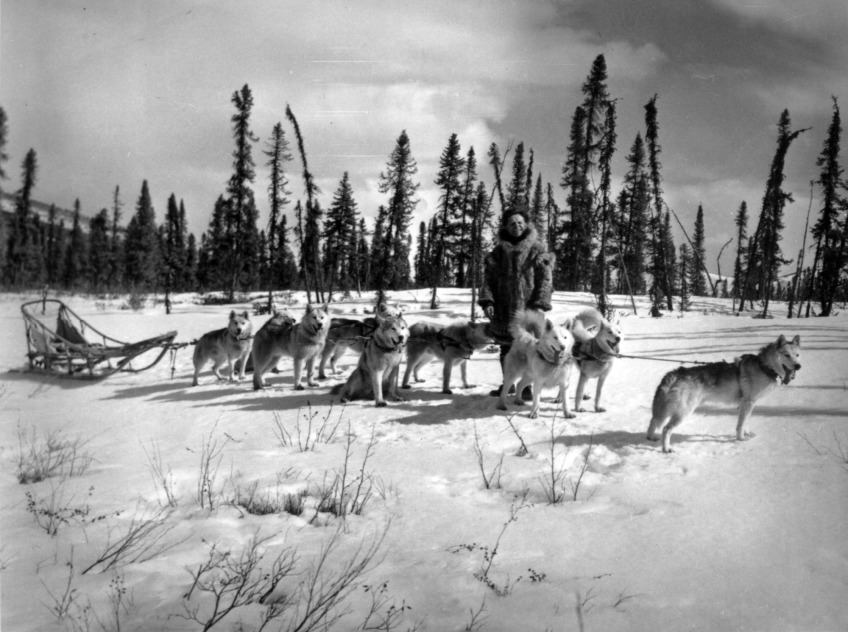The Great Race of Mercy

“How the boy said, ‘mama, I’m going to die,’ and how she knew enough to say, ‘no you aren’t honey, no you never will.’ How this boy could only stare back at his father and mother and why they lied.”
In the late decades of the 18th century and the early 19th century, unknown numbers of equally unknown children died from recurring epidemics of diphtheria across the United States. In those days, reminded of what creation and destruction is — and what it must be — whispered in the same breath, is the tale of the Great Race of Mercy, where a small town was saved through sheer perseverance.
The town of Nome, overlooks the Bering Sea, and is as extreme west of Alaska as you can get. In the winter of 1924, Curtis Welch was the town’s only doctor, entrenched within a severe winter that made the small community almost unreachable. Four native Iñupiaq children had died before the doctor could diagnose it as diphtheria — the bacteria that invades the respiratory system, producing a toxin that invades the bloodstream and damages the heart, kidneys and nerves. In the days of sweeping epidemics, diphtheria was commonly known as the “strangling angel of children” — the angels that swell necks and leave gaping craters in the flesh of their victims.
By January 1925, it had already become clear that something needed to be done. If not, the worst could decimate the entire community. Despite a quarantine in place, many more cases would begin to show up, simply because of the way the bacteria is spread all too easily — person to person, coughing, sneezing. Diphtheria destroys the lining of the throat, commonly causing the throat and neck to swell, leading to difficulty breathing.
The problem was that the town had no stocks of antitoxin, one that can fight off the effects of the bacterial toxin that may have seeped into the blood. The only stocks the town had were six years old — too old to be useful. Dr Welch sent a telegram to the Alaska Territorial Governor, Scott Bone, who was in Juneau, and to the U.S. Public Health Service in Washington DC.
“An epidemic of diphtheria is almost inevitable here STOP I am in urgent need of one million units of diphtheria antitoxin STOP Mail is only form of transportation STOP I have made application to Commissioner of Health of the Territories for antitoxin already STOP There are about 3000¢White natives in the district.”
The only serum that could stop the outbreak was in Anchorage, nearly a thousand miles away. How to get it to Nome was the next problem that would eventually turn out to be essentially a race to vaccinate. Rail, air, and sea were all ruled out as not an option thanks to the harsh winter and the remoteness of Nome. A crisis recently experienced by the town only for the second time in its history.
The only option was to transport the antitoxin needed by dog sled — something that had not been attempted in mid-winter before. The antitoxins arrived by train at Nenana on January 27th, where it would then be transferred by dog sled — hopefully in time to sway the epidemic.
The ordeal and race to vaccinate was in the form of a relay — a 674 mile relay — much of it over uncharted Bering Sea ice, over five and a half days. When the serum finally arrived, it had to be thawed before it was used. Not long after the serum was in the hands of Dr Welch, plans were already underway to deliver a second batch.
The death toll could have been much worse if it wasn’t for the delivered serum. Dr Welch estimated at least another hundred cases amongst the native population. The following year over three dozen more cases were reported, but didn’t prove a major public health problem due to the stocks of serum.
In the end the quarantine on Nome ended on February 21. A stunning display of a public health effort. And since 1973, this effort is symbolized in the Iditarod Trail Race — run annually in memory of the original sled dog relay. The Alaska Immunization Program uses the “Race to Vaccinate” to heighten awareness of the critical need for timely immunizations for children before they are two years old.
 Follow
Follow